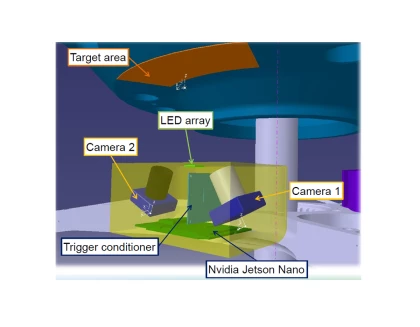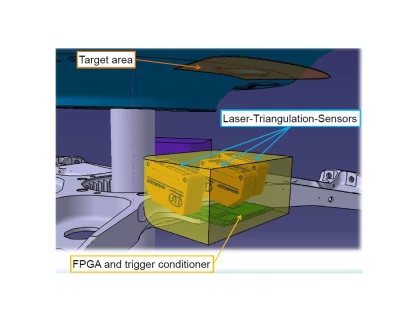
Background
Compared to a propeller of an airplane or the rotor of a helicopter, the proprotor of a tiltrotor aircraft is a very complex system working under very different operational conditions, varying from high speed cruise in airplane mode to hovering and low speed manoeuvres in helicopter mode. Additionally, the transition between airplane and helicopter mode causes a lot of challenging load conditions on the rotor blades.
Thus, the real-time monitoring of the reactions of the proprotor system to these varying operating conditions is of great importance. Especially the monitoring of the rotor flapping angle and cross-flapping angle is vital to the safety of flight and, if properly controlled, makes it possible to expand the envelope of possible flight conditions, thus improving the performance of tiltrotor operations.
The sensor system currently utilized for this task in the Next Generation Civil Tiltrotor (NGCTR) uses so called Rotary Variable Differential Transformers (RVDTs) or Potentiometers, that are proven and robust sensors, but require complex and potentially delicate mechanical linkages (i.e. levers, bearings, etc.), to be installed in a challenging operating environment, especially in terms of vibrations.
In this context, the development of an innovative contactless sensor system, that can be mechanically separated from the proprotor hub and its vibrations, may result in a potentially more robust and durable installation.
Strategy
In FLAPSENSE, a sensor system is being developed suitable to perform real-time and contactless measurement of the NGCTR proprotor flapping and lagging motions.
The developed system is based on a highly accurate optical sensing method providing the actual flap motion of the rotor blade to the aircraft avionics in a wide and challenging range of conditions, varying from hovering and low speed maneuvered flight in helicopter mode, to high speed cruise and maneuvering conditions in airplane mode. The system will be integrated in the proprotor assembly and co-rotate with the rotor hub.
In particular, two concepts are being developed:
1. Concept 1 is based on two cameras observing a field of imaging markers placed in a target area located on the lower side of the hub. The cameras are mounted on the rotor lower spoke and they allow for 3D position detection based on a single pin hole camera model. The image recording is triggered by an azimuth sensor and the image processing is performed by a microprocessor calculating the actual, real-time flapping and cross-flapping angles, as well as the lag and the vertical displacement between the lower spoke and the flapping part of the hub. A LED array is been positioned between the cameras to ensure proper illumination of the measurement area.
2. Concept 2 is based on a laser triangulation method and includes at least three laser distance sensors measuring the distance between the lower spoke and the lower side of the hub. The sensors will be arranged so as to measure three different points on the target area forming a plane. If the rotor hub is tilted due to the flapping or cross-flapping motion the measured distances change and result in a similar tilt of the measurement plane. The plane inclination is calculated for each measurement point and in combination with the current azimuth, the flapping and cross-flapping angle are determined.
Outcomes
The project is currently on going. In the next phase, sensor systems based on the two selected concepts will be realized in laboratory and tested with respect to their functionality as well as their robustness with regards to the later inflight environment on the NGCTR demonstrator.
Duration: March 2018- February 2024
This project has received funding from the Clean Sky 2 Joint Undertaking (JU) under grant agreement No. 785571







